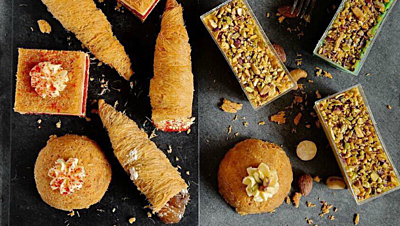Choosing the Right Fat
One of the key factors in achieving perfectly spread cookies starts with Choosing the Right Fat. The type of fat you use in your cookies can dramatically alter their texture, taste and how much they spread during baking.
Traditionally, for classic cookie recipes, we're prone to reaching for butter. However, bear in mind, all fats are not created equal.
Properly Creaming Butter and Sugar
After we've decided on the best type of fat for our cookies, the next crucial step in baking the perfect cookie is properly creaming our butter and sugar together. This combination creates a strong base for our cookies. It's essential to understand that this isn't a simple mixing process. It's a vital part of baking that, when done right, guarantees the cookies will spread evenly during baking and provide a desirable, delicate texture.
The creaming process is started by beating the butter until it's light and fluffy. Salted butter or unsalted, it makes no difference. Yes, the choice of fat plays an incredible role, but so does the preparation of it. Room temperature is ideal for this step, cold butter is hard to work with, and if the butter is too warm, it won’t hold air pockets created in this process. These air pockets will be what gives our cookies that crumbly texture we crave.
Then, gradually add in the sugar. The sugar grates into the softened butter creating tiny pockets of air, further contributing to the final texture. Grating the butter and sugar together directly impacts your cookies' spread, ensuring your cookies spread just enough without being overly thin. Remember, the longer we beat the butter and sugar together, the more air we incorporate, leading to cookies that are light and crispy.
The crucial test for the creaming process - the color change. As we cream the butter and sugar together, we aim for a texture that's light and fluffy. The mixture will become pale and increase in volume, signaling that it's been adequately aerated. This stage of creaming is fundamental for achieving cookies of the right texture and spread.
The art of creaming butter and sugar efficiently requires practice to perfect. Just like choosing the right type of fat for our cookies, understanding the creaming process is another secret to achieving ideally spread and flavorful cookies every time.
Using the Correct Flour
Following the proper creaming method, the next pivotal step to consider is choosing the right type of flour for our cookies. Not all flours are created equal. They vary in protein content which, in turn, affects the structure and final texture of our cookies. Understanding this concept and considering it during our baking process will elevate our cookies from good to outstanding stuff-of-legends kind of treats.
A typical all-purpose flour has a protein content around 10-12% and is usually what's recommended in basic cookie recipes. For a softer, more tender cookie, we could opt for cake flour, which has a lower protein content around 7-8%. On the flip side, if we opt for bread flour, with a higher protein content of 12-16%, our cookies will come out denser and chewier since more gluten develops during mixing.
Importance of Chilling the Dough
Once we've understood the influence of the right flour and perfected the creaming process, our next destination on the cookie perfection journey is chilling the dough. This might seem like an optional step—the sort you're tempted to skip if you're strapped for time—but trust us, it's pivotal.
If you're wondering why, let's dive into the science behind it. When you chill the cookie dough, it slows the spread of cookies during the baking process. In turn, this ensures you get thick, fluffy, and scrumptious cookies. We might have made some excellent batter with all-purpose flour or even a mix, but without correct chilling, you're setting your cookies up for mediocrity.
But, it's not just about slowing the spread. Proper chilling also improves the flavor of cookies. How, though? Well, during this time, the fat in the dough solidifies. When we then bake the cookies, the fat takes longer to melt, resulting in improved texture and enhanced flavor.
You may be thinking, "How long do we chill the dough?" Great question! It can vary, but a minimum of 30 minutes is usually recommended. For optimal results, chill your dough overnight. You'll need a bit of forward planning, but the results are worth it.
Let's now move on to another enticing aspect of cookie-making - adding the right amount of leavening agents to our dough.
Baking at the Right Temperature
Once we've mastered selecting the right flour, creaming ingredients with precision, chilling the dough, and adding the correct amount of leavening agents, it's time to zero in on the next secret of cookie baking - setting your oven to the right temperature. The importance of baking at the correct temperature can't be overstated. It's the deciding factor between deliciously soft and golden-brown cookies or hard, caky, and overly crispy ones.
Firstly, preheat your oven thoroughly. It's a common misconception that you can simply pop your dough in as soon as the oven offers a warm invitation. Yet, properly preheating your oven ensures a consistent and accurate temperature throughout the baking process.
Accuracy is the key here. If the oven temperature is too low, our cookies will spread out more, becoming flat and hard. On the other hand, too high temperature would bake the exterior too quickly, while the centers remain unbaked. Invest in an oven thermometer for precise temperature measurement, especially if you're using an aged oven.
Our next focus will be on ensuring the cookies are baked evenly. Once the oven is optimally preheated, carefully place your cookie dough at the center of the oven. While baking, it's also crucial to rotate your baking sheet halfway. This allows for even heat distribution and prevents the cookies from browning too much on one side and staying pale on the other.
In the journey to baking the ultimate batch of cookies, the devil truly lies in the details. Through mastering each step, from choosing the right flour to baking at the correct temperature, we can assure ourselves of consistently mouthwatering results. We'll now move on to discuss the final artform in perfecting a cookie; the cooling process.
We've journeyed through the secrets of achieving perfectly spread cookies each time. We've learned that baking at the right temperature can make or break the texture and flavor of our cookies. It's clear that preheating the oven and selecting the right temperature range are crucial. We've seen the importance of an oven thermometer for precise measurements and how rotating the baking sheet halfway can lead to even baking. It's all about the details, from the type of flour to the baking temperature.
















